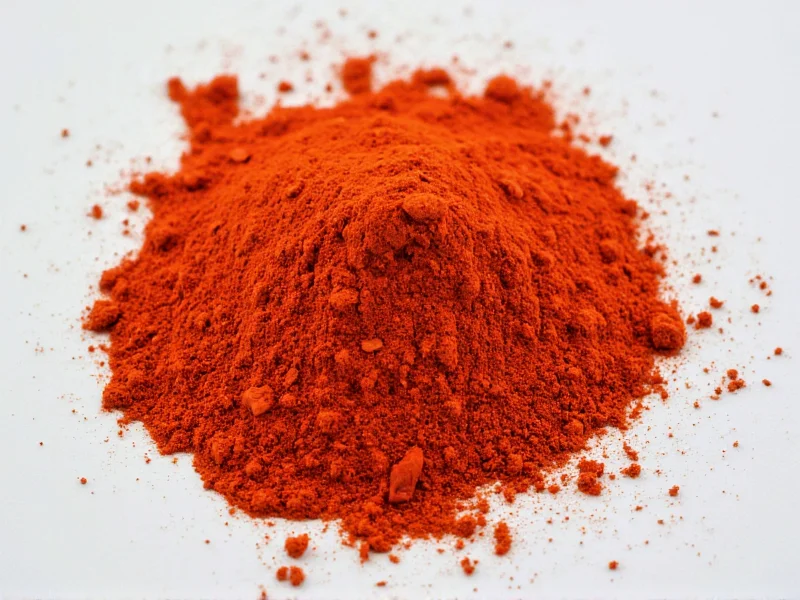Understanding cayenne powder's precise heat level helps home cooks and culinary professionals use this versatile spice effectively. The Scoville scale, developed by pharmacist Wilbur Scoville in 1912, measures the pungency or spiciness of chili peppers and other spicy foods through capsaicin concentration.
What Determines Cayenne Powder's Scoville Rating?
Cayenne pepper's heat isn't uniform across all products. Several factors influence the final Scoville rating of cayenne powder:
- Pepper variety - Different cultivars of Capsicum annuum produce varying heat levels
- Growing conditions - Soil quality, climate, and water stress affect capsaicin production
- Ripeness at harvest - Fully mature red peppers contain more capsaicin than green ones
- Processing methods - Drying techniques and grinding consistency impact heat concentration
- Blending practices - Commercial products may mix peppers from different heat ranges
Cayenne Powder in Context: Scoville Scale Comparison
Understanding where cayenne powder falls on the Scoville scale helps contextualize its heat level compared to other common peppers. The following table shows representative Scoville measurements:
| Pepper Type | Scoville Heat Units (SHU) | Heat Level Description |
|---|---|---|
| Bell Pepper | 0 SHU | No heat |
| Jalapeño | 2,500-8,000 SHU | Mild to medium |
| Serrano | 10,000-23,000 SHU | Medium hot |
| Cayenne Powder | 30,000-50,000 SHU | Medium to hot |
| Thai Bird's Eye | 50,000-100,000 SHU | Very hot |
| Habanero | 100,000-350,000 SHU | Extremely hot |
Practical Implications for Cooking
Knowing the cayenne pepper powder scoville range helps cooks adjust recipes appropriately. When substituting cayenne for other peppers, consider these practical guidelines:
Cayenne powder delivers consistent heat distribution in dishes compared to fresh peppers. Its fine texture allows for even dispersion throughout sauces, rubs, and spice blends. Professional chefs often prefer cayenne powder for its predictable heat profile in commercial food production.
When working with cayenne powder scoville measurements in mind, remember that heat perception varies among individuals. Factors like previous exposure to spicy foods, genetic differences in pain receptors, and even current health conditions affect how heat registers. Start with smaller amounts (1/8 to 1/4 teaspoon) and adjust gradually to achieve desired spiciness.
Handling Considerations and Safety
The capsaicin concentration that gives cayenne powder its scoville heat units also requires careful handling. Always wear gloves when working with high-scoville cayenne products and avoid touching your face. If you experience skin irritation, wash with soap and cool water rather than rubbing, which can spread the capsaicin oil.
For those sensitive to spicy foods, understanding cayenne pepper scoville units helps manage consumption. The burning sensation from capsaicin can be neutralized with dairy products like milk or yogurt, which contain casein that binds to capsaicin molecules.
Measuring Heat: From Subjective Testing to Modern Methods
Originally, the Scoville scale relied on human tasters diluting pepper extracts until heat became undetectable. Today, high-performance liquid chromatography (HPLC) provides precise measurement of capsaicinoids, then converts these measurements to Scoville units using a standardized formula. This modern approach ensures more consistent cayenne powder scoville ratings across different testing facilities.
Storage and Potency Preservation
Proper storage maintains cayenne powder's heat level over time. Exposure to light, heat, and moisture degrades capsaicin content, gradually reducing the effective scoville measurement. Store cayenne powder in an airtight container away from direct sunlight for maximum shelf life. Properly stored, quality cayenne powder retains most of its heat potency for 2-3 years.











 浙公网安备
33010002000092号
浙公网安备
33010002000092号 浙B2-20120091-4
浙B2-20120091-4